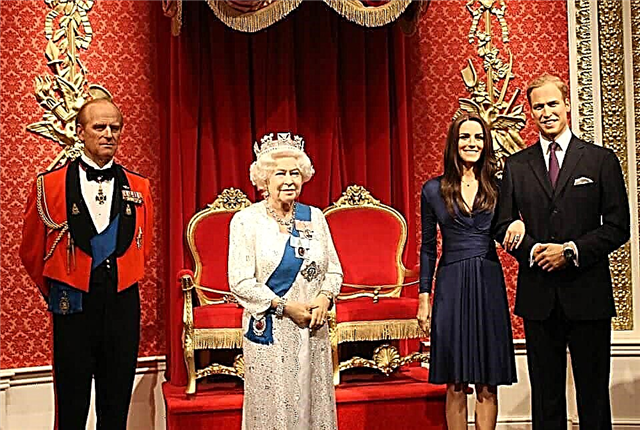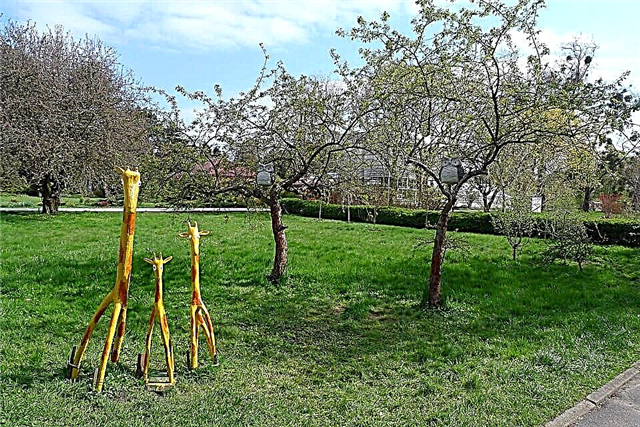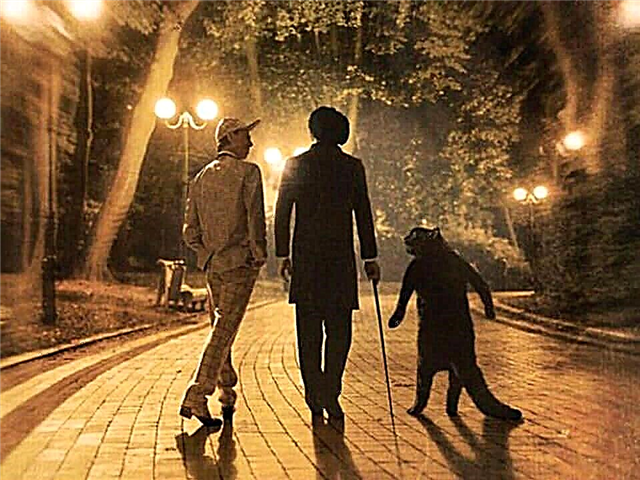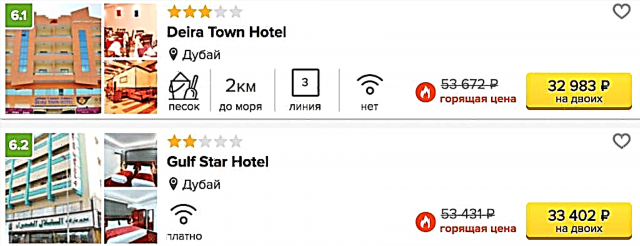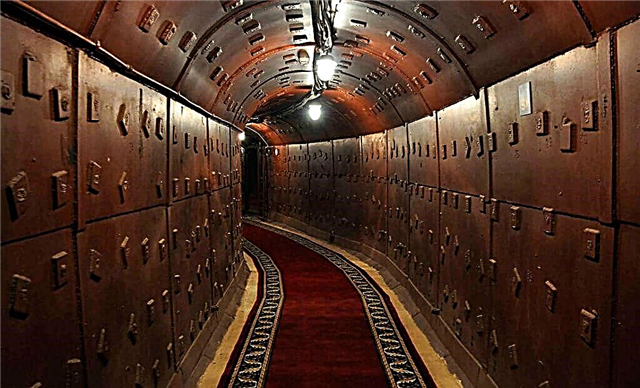You can find them in woodlands, along busy roads, on hills, among mountain peaks. Complex technical structures in the form of fortified bunkers were built to protect against enemies at all times. For this, advanced technologies, equipment, materials were used. The operational requirements for buildings depended on the type of weapon used.

Modern bunkers are being built to protect the population during a deadly nuclear war. They are created to accommodate the main persons in any country. One of them is Bunker-42. The object is located on Taganka. It was conceived for the same purpose during the Cold War. The dream of an anti-nuclear shelter, built in the center of the capital to protect the main figures of the USSR, was born after nuclear tests. Not a single country in the world at this time had such fortifications. Design options for structures of this type were tested at this facility. The construction order was signed by I.V. Stalin. Construction was carried out from 1950 to 1956.
History
The ancient walls of the Kremlin also once served as a defense against invaders. Historical events have made the Kremlin an important place of work for the government. This fact was taken as a basis when choosing the location of the anti-nuclear bunker. It is easy to get from it to the Kremlin, to manage the army, the state in the event of a nuclear war. The location of Tagansky Hill was better than others for construction. In the center of the city it was necessary to build a unique structure without damaging existing communications and buildings.
All work must be carried out in conditions of special secrecy from foreign intelligence, ordinary people. The construction work was entrusted to the best specialists of Metrostroy. All of them signed a document on nondisclosure of the secrets of construction. Until 1986, bombers equipped with nuclear weapons were controlled from the underground fortification. It was the command post for the control of Long-Range Aviation equipment.
The main building elements of the shelter are a protective dome (head), a deep shaft, and a bunker.
Head
Even the locals had no idea that a unique structure was hidden inside ordinary brick walls that could withstand a powerful nuclear strike. The thickness of the walls of the protective dome reaches 6 m. They are made of cast iron, durable concrete. The dome was installed on a special foundation. Its width does not allow the canopy to move as a result of the impact of the blast wave. Modern methods of protection against a shock wave are implemented inside the head. In the course of its distribution, two sliding doors are installed. Their thickness is 40 cm. These are iron boxes filled with concrete.

In the first corridor, the blast wave acquires a direction parallel to the door without damaging it. The second corridor has a dead end (duct). It provides a bifurcation of the wave, brings it up and out. The air served as an emergency exit for the facility. The corridors are equipped with thoughtful turns. Together with numerous turns, they are able to weaken the force of the shock wave, protect the door, the path to the elevator, the stairs leading to the bunker from damage. The corridor labyrinth reliably protected from the passed radiation. There are two technical floors in the basement of the domed room. This is where the equipment for ventilation in the bunker is located.
An interesting fact is the method of testing the reliability of the dome. For this, at the Semipalatinsk test site, fortified drifts were built, having types of reinforced concrete structures fastening at different depths: 10, 20, 30 m. The thicknesses of the protective domes were different. Projects RDS-1, RDS-2, RDS-37 were tested at different power of the explosion charge. The option was taken as a basis when not a single animal in the structure was injured.
Mine
The protective dome is connected to the bunker through a vertical shaft. Its diameter is 6m, depth is about 60m. It has an elevator and a staircase. It conventionally runs along 18 floors going underground. The staircase consists of 310 steps of different heights. The staircase measures 2 x 4m.
Bunker
It is made up of tunnel blocks. Their diameter is about 9.5 m. The usable area of the building is 7000 sq. m. The tunnels are located at the same level, run in parallel, connected by passages. Through the Taganskaya and Kurskaya stations, the bunker is connected to the city's metro system. The facility was supplied through a tunnel between the Taganskaya and Kurskaya stations. On the second path, one could get into the technical hall of the Taganskaya ring station. The bunker housed a geodetic research laboratory, a radio station, and a telegraph.
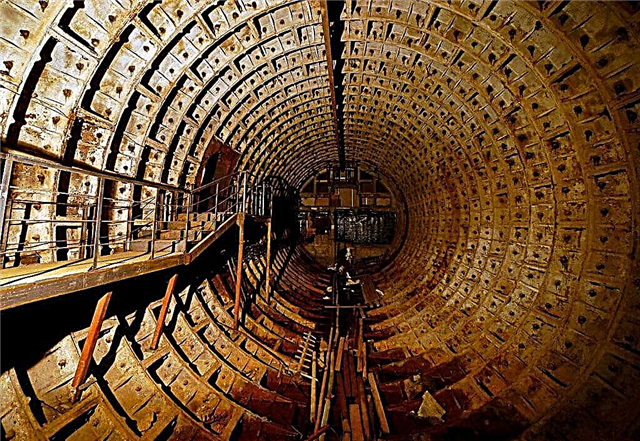
There were two wells of the purest artesian water. There were large supplies of food. The staff of the working staff was about 2500 people. Employees entered work through four separate entrances. There is now one in operation, representing a massive gate marked with a red star on a green background. Behind the door you need to go through two sealed doors with a compressed air blocking system. A shower was built in the compartment, a change of clothes was organized. After descending into the mine, everyone passed the checkpoint confirming the right to enter.
The era of perestroika, the collapse of the Soviet Union, a sharp leap in the development of technology made the facility unprofitable, not meeting the requirements of modern military power. In 1995, the secrecy was removed from him. Serious accidents in the metro, outdated waterproofing, which allowed the facility to be repeatedly flooded, did not allow the bunker to be used for its previous purposes without major reconstruction. Object GO-42 was purchased in 2006 by the private company Novik-Service with the aim of creating a Museum that reveals the secrets of the Cold War.
What to see
An interesting proposal of the museum is the architectural elements of the halls and corridors. One of them contains a copy of the command post. A room with buttons for carrying out a nuclear strike. A stand with a picture of rockets that could fly anywhere in the world at any moment. Now there is an opportunity to see the virtual destruction from such a nuclear strike. A hall of interesting expositions with radio stations of the Soviet era and Geiger counters was organized. Protective suits against hazardous chemical compounds, gas masks.
The propaganda posters of the Soviet period are viewed with interest. A modern entertainment area and a dining room have been created. The rooms of engineering systems have been restored for display to visitors. Upon entering the museum, the visitor receives a scarlet pass, similar to the pass of the former Ministry of Defense. It bears a name, a photograph of an unknown person with a gas mask.
Game programs and excursions
Group, individual excursions are held on the territory of the museum. Their program includes familiarization with underground tunnels, participation in conferences, sports games, entertainment events, real travels through the underground. The most interesting excursions are the following suggestions:
- "The neck is removed." The duration of the excursion is 1.5 hours. It includes watching a documentary about the nuclear competition between the United States and the USSR. A nuclear explosion can be seen during the film
- "ZKP-42". The hike along the mysterious corridors ends with a visit to Stalin's office, the hall where the fateful decisions were made by the country's top leadership
- "Extreme". The excursion reveals the secrets of the object's life support systems. Acquaintance with engineering provides an idea of the strength of the mind of people, their enduring hard work, which created the bunker

In the museum, you can take part in various entertaining games, for example, to master airsoft.This is one of the best places in Moscow for team shooting game. The "Crazy Professor" program provides an opportunity for visitors of all ages to pass tests for dexterity, ingenuity, accurate target shooting, strength. In the adult program "Zombie Apocalypse", participants must destroy the bunker, preventing the spread of the zombie virus. Or in the game "Bunker Quest" to destroy the terrorists who have seized the object, to defuse the bomb. To do this, you must correctly go through all the stages, unravel the available clues. Children of any age and adults can participate at the same time in an interesting game "Confrontation". And in "Horror of the Underground" learn to conquer inexplicable horror and fear in yourself.
Services

In Bunker-42 on Taganka you can visit a restaurant, order a banquet hall for use during family holidays. Try your hand at a karaoke club, watch an interesting movie in a cinema hall with a DVD system. In a comfortable, modern conference room, take part in a scientific seminar, conference, organize a presentation of your business. Weddings, children's parties, exhibitions, corporate events are held here for a specific fee, previously agreed with the administration of the museum. The territory of the museum has been repeatedly used as sites for filming various films, for example, "Infection", an action movie based on the novel "SMERSH-XXI".
How to get there and opening hours
You can get acquainted with one of the secrets of underground Moscow, representing a trail of, fortunately, not a nuclear war on our planet, at the address: 5th Kotelnichesky lane, 11. You need to get off at the Taganskaya metro station, go through Nizhnyaya Radishchevskaya to the lane and go to the Museum building. It works around the clock every day.


